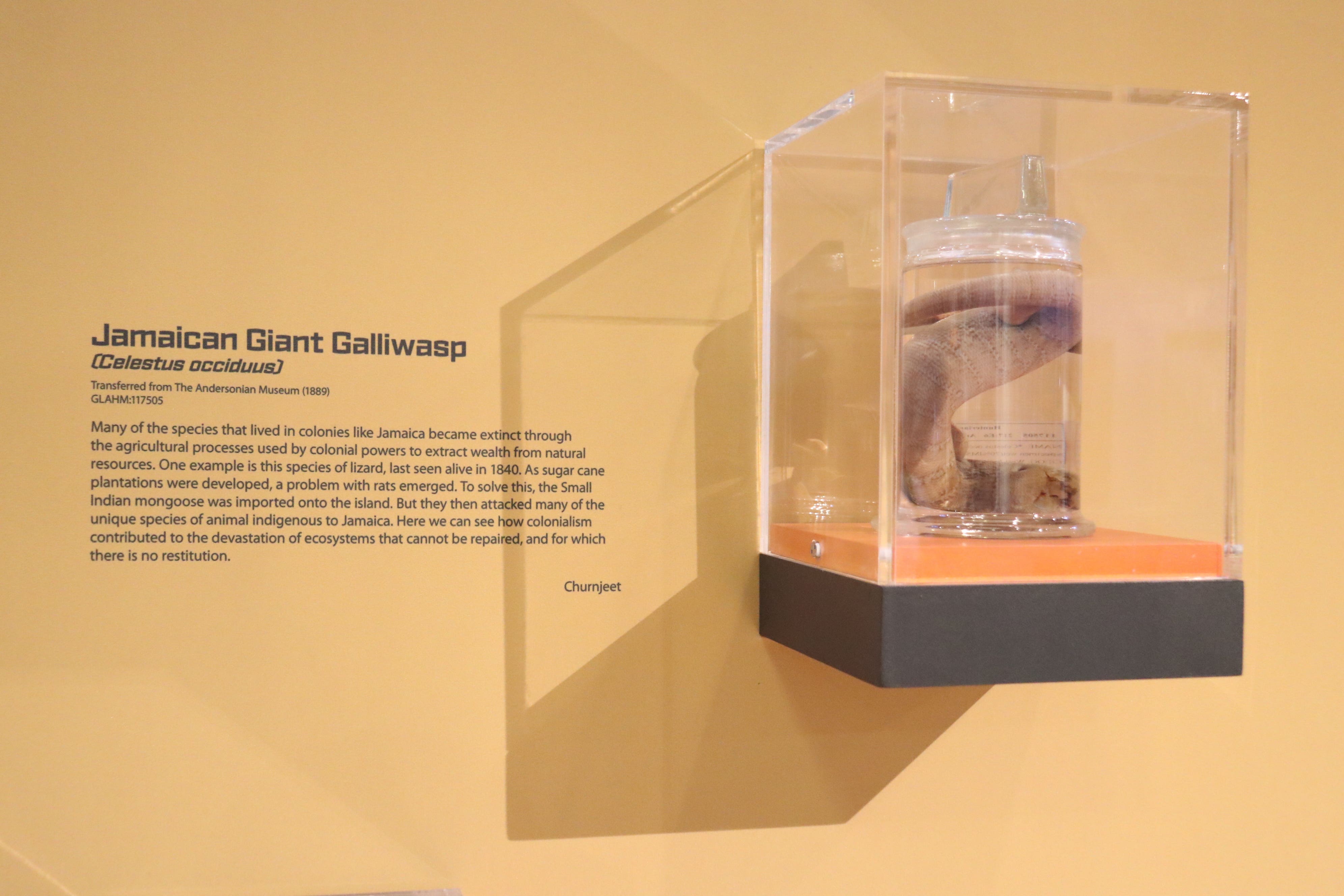19th century lizard specimen to be repatriated from Scotland to Jamaica
Giant Jamaican Galliwasps were last confirmed alive in the 1800s.

A 170-year-old lizard specimen is to be returned to its Jamaican homeland from a Scottish university collection as part of reparatory justice moves.
The Jamaican Giant Galliwasp, a species now presumed extinct, is thought to have been collected in the 1850s and became part of the University of Glasgow collections in 1888.
A joint team from the University of the West Indies (UWI) and the Institute of Jamaica (IOJ) will now travel to Glasgow to retrieve the specimen in what is said to be the first repatriation of a natural history specimen in the Caribbean.
It comes following a 2019 Memorandum of Understanding (MOU) between the UWI and University of Glasgow (UofG), which aims to foster collaboration in research and education and address the historical legacies of colonialism.
Professor Sir Hilary Beckles, vice-chancellor of the UWI, said: “The reparatory justice movement deals with various issues of different scales that must be addressed.
“By returning the Galliwasp to its rightful place, we take a small but significant step towards laying the foundation for a regional and international discussion on repatriation.”
Giant Jamaican Galliwasps were last confirmed alive in the 1800s but the species is now considered to be extinct.
Their disappearance was due to the sugar cane plantation economy, which led to a loss of natural habitat and introduced predators such as rats to the island.
The specimen at the University of Glasgow’s Hunterian Museum entered the university’s collections in 1888 following the transfer of ethnographical and zoological specimens from another Glasgow collection, the Andersonian Museum.
The lizard, a mature adult, is contained in a glass stoppered jar and stored in 70% ethanol and is said to be in good condition for a wet preserved specimen that is around 170 years old.
Steph Scholten, director of the Hunterian, said: “We hope that this return will help foster further relationships between the University of the West Indies and the University of Glasgow, as well as deepen understanding of repatriation issues in the museum sector.”
The university said that one of the most tangible outcomes of the MOU is the Glasgow-Caribbean Centre for Development Research (GCCDR), which funds research projects that advance development goals in the Caribbean, facilitate academic partnerships, and raise global awareness about the ongoing impact of historical slavery.
It said the repatriation not only represents the return of a valuable piece of Jamaican heritage but also signifies a commitment by the university to rectify past injustices and ensure Caribbean ownership of its scientific and cultural treasures.
The team from UWI and IOJ will return to Jamaica with the lizard specimen on April 24.
An official handover ceremony will be held there and the lizard will be deposited in the Natural History Museum of Jamaica on permanent loan in the national flora and fauna collection for safekeeping and to ensure it is accessible to all Jamaicans.
Bookmark popover
Removed from bookmarks